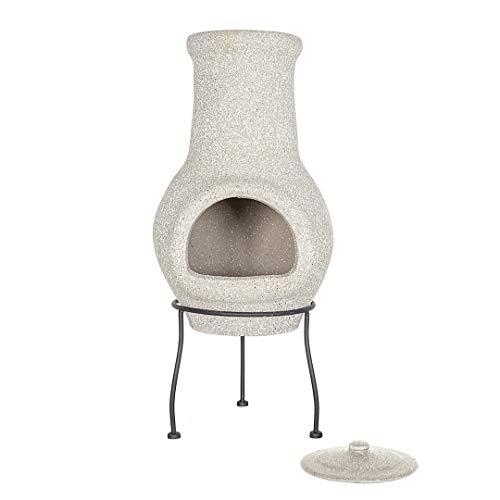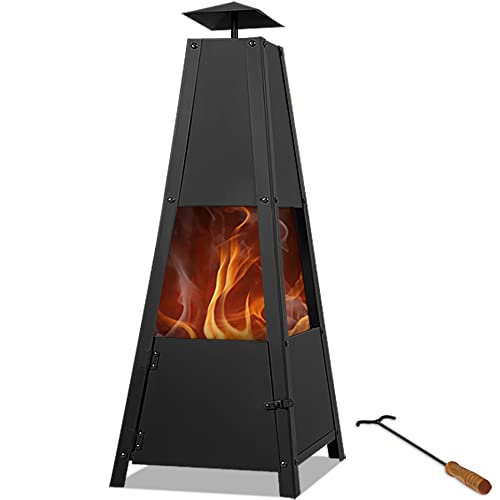Fire Pits & Chimineas Tips To Relax Your Daily Lifethe One Fire Pits &…
페이지 정보

본문
 Chimineas Vs Fire Pits
Chimineas Vs Fire PitsLike a stove with a potbelly Chimineas come with an opening in the front to allow for stacking fuel, and a chimney attached that directs smoke upwards. They are available in a range of materials including clay and terra cotta to give a traditional look or iron and cast iron for greater durability.
Clay models can be fragile and require careful handling while metal versions are able to withstand higher temperatures and rougher handling. Both create warmth and ambience to outdoor spaces.
Chimineas
Chimineas are like fireplaces in a number of ways, but they have an attractive appearance and are specifically designed for outdoor use. They are made from clay or terracotta, and can be decorated with vibrant themes inspired by Mexican. Modern chimineas are made of materials such as aluminum and cast iron, which are more resistant to breaking and damage than traditional clay.
Originally a stove with a potbelly the chiminea was created in Mexico and other Western states. They are usually used for entertainment, but they can also be a focal piece in any outdoor space. The long chimney of a chiminea fire pit may direct smoke upwards, keeping it away from people sitting around it. This is in contrast to fire pits that often have an open flame, which can release sparks, embers, and other debris over the ground.
Chimineas and fire pits both provide warmth to outdoor spaces, but they offer distinct advantages and requirements for maintenance. Personal aesthetic preferences play a big role in this decision, as the chiminea log burner's intricate design can be a perfect match for different garden styles while a fire pit's sleek, minimalist design is suited to a wide variety of outdoor settings.
The difference in maintenance between fire pits and chimineas also has much to do with the substance of each, as terra cotta and clay are more prone to damage than cast iron and aluminum. Therefore, chimineas require more frequent maintenance.
Both kinds of outdoor fireplaces are popular because they create a cozy and inviting area for family and friends to gather for dinners or cocktails. The enclosed and enclosed design of a chiminea makes it suitable for smaller groups and is more efficient in warming up the area. Chiminesa's safety advantages are derived from the fact that sparks and embers that blaze off the fire are contained. Fire pits should be carefully placed to reduce this risk and be constantly monitored.
Fire pits
You may have to decide whether you want to add an achiminea or fire pit when planning your outdoor space. Both options add warmth and elegance to a garden or patio but they differ in their appearance, their operation and the security features. We'll help you select the best one for your space by examining the initial costs, maintenance costs, fuel expenses, and more. We'll also compare heat output smoke, heat output, and safety between the two.
Chimeneas or chimineas are an open-air fireplace with a chimney that is used to cook. They can be constructed from clay, metals such as steel or cast iron, or even stone or cement. They are available in various designs, shapes and sizes, providing the flexibility to suit different outdoor decors. Depending on the material they are made from they can be insulated for extra comfort and a smaller flame, which helps to reduce the chance of sparks flying off and helps ensure safety during operation.
While chimineas can be used with charcoal or wood however, it is recommended to make use of dried or seasoned logs, as damp wood releases more smoke and is less effective in heating. Chimineas also require a bigger fire to keep them warm, which could lead to a greater amount of smoke, however this can be reduced by proper air flow, the use of a log grate and regular maintenance.
Steel is the most sought-after material for fire pits due to its cost and long-lasting. Some Fire pits & chimineas pits can be moved around while others are permanent fixtures. They are typically erected into the ground or on a deck that is raised and are available in various sizes, shapes, and finishes to match a range of outdoor decors. Gas is an option because it is convenient and provides control. Charcoal and wood can also be used.
Fire pits are more difficult to maintain than chimineas but generally regarded as more risky. Their open design permits more sparks that stray, which can be a danger to children and pets. They must be kept away from objects that ignite and constant supervision to avoid unwanted accidents. They also generate a lot of smoke and ash, which can make them uncomfortable for some people to be near.
Safety
 Both chimineas, and fire pits, can add warmth and awe to any outdoor area. However they also carry potential dangers. Both are extremely hot, which is why you must be cautious when using them, particularly around animals and children. Both can be used on surfaces that are susceptible to cracking when heated (see below) and so putting a layer of sand in your chiminea or stone and brick slab under the fire pit is advisable. Both can also release a considerable amount of smoke, which could be a problem if you live in a windy location. The chiminea is not as susceptible to wind blowing embers and ash around since the fire is contained within. The opening is only one-sided, and you can't see the back, which means it is easy to leave the chiminea unattended when the wind is strong.
Both chimineas, and fire pits, can add warmth and awe to any outdoor area. However they also carry potential dangers. Both are extremely hot, which is why you must be cautious when using them, particularly around animals and children. Both can be used on surfaces that are susceptible to cracking when heated (see below) and so putting a layer of sand in your chiminea or stone and brick slab under the fire pit is advisable. Both can also release a considerable amount of smoke, which could be a problem if you live in a windy location. The chiminea is not as susceptible to wind blowing embers and ash around since the fire is contained within. The opening is only one-sided, and you can't see the back, which means it is easy to leave the chiminea unattended when the wind is strong.It is crucial to only use seasoned, kiln dried logs in all types of fireplaces because they be more efficient in burning and produce less smoke. Avoid burning materials like trash, twigs, and paper, which can quickly ignite and cause a dangerous reaction.
Be aware of any local burning bans. These can be caused by weather conditions that can combine with high emissions to raise levels of fine particulate pollution to dangerous levels. These harmful toxins can trigger respiratory issues when breathed in.
Keep a bucket or garden sprinkler in case your fire starts to get out-of-control. Make sure that you keep the area around your fire pit free of any twigs or branches that could catch fire. Finally, it is a good idea to keep an emergency kit on hand in case someone is injured by sparks or smoke. Both a chiminea or a fire pit will last for many years when they are properly cared for. However, clay and terracotta are more fragile than metal and could break under extreme temperatures and therefore a cast iron chiminea or fire pit is an ideal choice for a hard-wearing addition to your patio.
Maintenance
If your backyard largest chiminea or fire pit is not properly maintained it could pose serious hazards. If it is used improperly or located too close to a building or other structures, it could result in an incident that could cause a house fire, and significant damages or injuries. It is essential to ensure that only natural materials like wood are burned and that no garbage, plastics or liquid fuels should be employed. Also, you should look up your local weather forecasts to be sure you're following the rules regarding when you can burn. Finally, it is a good idea to keep a hose or fire extinguisher at hand in the event in an emergencies.
A chiminea, a traditional outdoor wood-burning fireplace, provides warmth and ambience to patios and gardens. Chimineas come in a range of designs and styles. They are constructed from clay, metal, or cast iron. Many chimineas are decorated with elaborate, traditional designs that adds a rustic feel to outdoor environments. Chimineas are also thought to be more sustainable than fire pits because they emit less smoke and dust emissions.
Regularly cleaning your chiminea will keep it in good condition. Start by cleaning out any unburned wood and ash from the grate. Then, you can start a small fire with a handful of pieces of firewood. After about an hour then carefully dowse it with water to completely eliminate the flames. Allow the temperature of the chiminea to decrease before lighting a second fire.
Chimineas can be a gorgeous addition to your outdoor space, however they require more care than fire pits. To avoid rust and other damage caused by the elements, they should be cleaned regularly. Chimineas are also very fragile and could break or crack if not handled carefully.
In the end, the choice to go with a fire pit or chiminea depends on personal preferences and budget considerations. Both have advantages, but it's crucial to evaluate the initial investment and long-term expenses before deciding which one is the best for your home. If you want an option that is more durable for your home, think about a custom built fire pit or chiminea made from durable materials like steel or stone that can endure harsh weather conditions and more frequent use.
- 이전글How To Become A Prosperous Retro Fridge Freezers If You're Not Business-Savvy 24.11.08
- 다음글웹툰사이트 ※링크모음※ 사이트순위 모음 성인 24.11.08
댓글목록
등록된 댓글이 없습니다.

